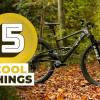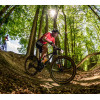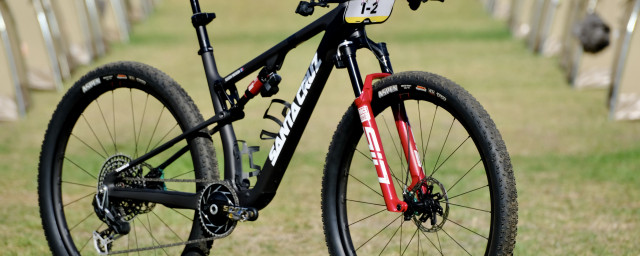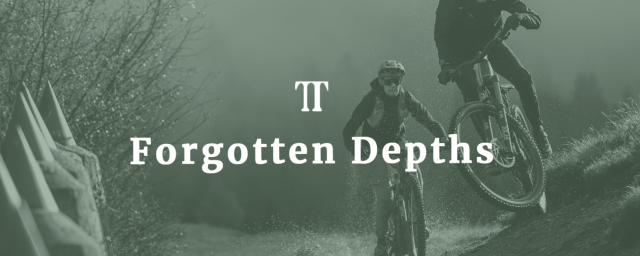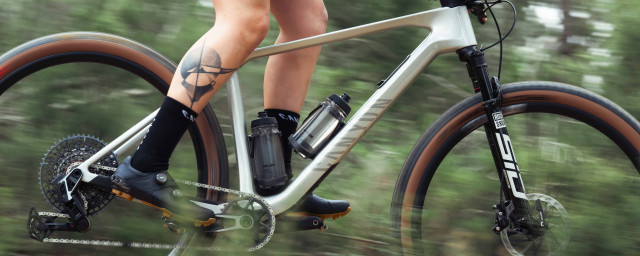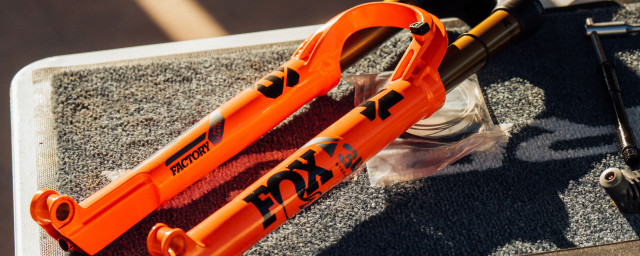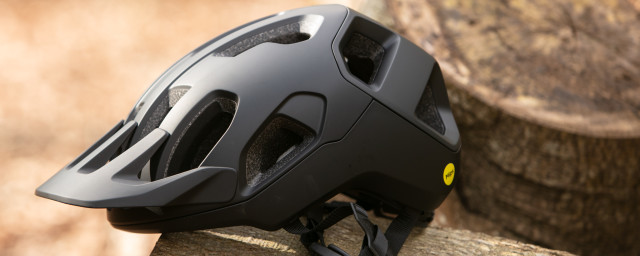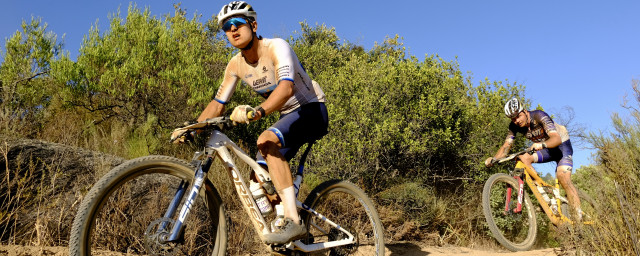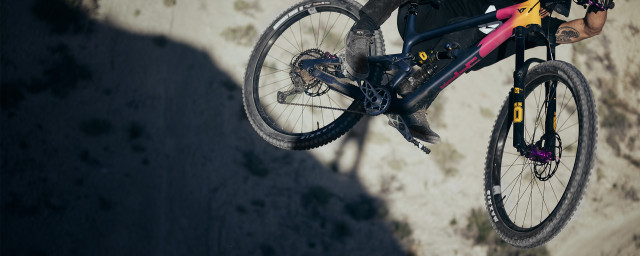From Africa to the world: the rise of cycling apparel brand, Ciovita

While many cyclists assume Ciovita is an Italian cycling apparel company, its origins couldn't be any further from Europe. The South African brand hails from the bustling, artisanal suburb of Woodstock, located just outside Cape Town's CBD beneath the backdrop of Table Mountain. The company was founded in 2015 by Andrew Gold - an industry stalwart with 17 years' worth of experience in the outdoor clothing sector - whose vision has seen the brand elevate itself from a promising start-up to an established force, having recently made waves in Australia, Europe and now the United Kingdom.
- What to wear for winter cycling - the essential tips
- Winter mountain biking 2024 - your guide to riding in the cold
- Waterproof cycling clothing - everything you need to know
Unlike many cycling clothing companies - most of which have production facilities in the East - Ciovita creates all its products in-house, and everything from design, printing and manufacturing is carried out in the Cape Town factory by skilled staff. Partnering with the Epic Series of global mountain biking races has seen Ciovita break into one of the most competitive markets in the world – Europe. While it wasn't easy, Andrew's passion for quality cycling apparel and his determination to spread the Ciovita message has always been his dream since the very beginning.
Having recently used Ciovita to create our very own custom kit through the company's Canvas program, off.road.cc editor, Aaron Borrill, sat down with the Ciovota CEO to learn about the company's humble beginnings, the challenges of COVID-19 and the rise to become a household name – not just in South Africa but the world.
Aaron Borrill: What were Ciovita's goals when starting in 2015? The landscape was very different back then. South Africa has never been globally associated with cycling apparel and manufacturing – what drove you to start a clothing brand in an already saturated market?
Andrew Gold: Yeah, I guess I wasn't aware of how saturated the market was becoming. So there was maybe a little bit of naivety but essentially I come from a clothing background. What I did for the previous 17 years - before Ciovita - is what fuelled it. I studied production management, and fashion design and then took some time off between selling my last business – and on that journey of discovery, the vision came to me after watching the Giro d' Italia. I thought, "You know what, I love cycling. It's a passion of mine and I can blend the skills I've learned over the last 17 years and create a cycling apparel brand."
At that stage, before I started Ciovita, we were making technical outdoor apparel. We were making down suits to put guys on top of Everest and if I could put someone at 8,500 metres above sea level, I'm sure I could put a pair of bib shorts and a jersey together, so that's how the brand essentially started.
So very quickly, it became apparent to us that a niche we could carve out for ourselves was the ability to create smaller runs for custom teams and events.
But running back to your question about the brand and saturated markets, the differentiator for us was that we started our business using our own factory, our own manufacturing and our own machinery. So we weren't relying on third-party manufacturers with minimums and long lead times. And that's what created the ability for us to be very nimble and we’re nimble to this day. We sponsor some elite athletes like Candice Lill who's done exceptionally well this year on the UCI Mountain Bike Cross-Country World Cup circuits and winning Africa and South Africa champs. She needs new jerseys and kit every second week and we were able to do that.
AB: Which international company served as inspiration?
AG: I think Rapha definitely in terms of brand perception and then you know certainly in terms of quality I look at brands like Assos as being like the pinnacle in terms of what a really good pair of bib shorts should look like and feel like and I still look up to those brands today. Still, I'm envious of those brands, they've created a great market for themselves.
AB: Many people, especially in Europe, don't know Ciovota is a South African company. Now that it's become more established, how do you plan on communicating its heritage and place of birth?
AG: So that's a great question. There is a story around the name and why I chose Ciovita. In South Africa, there's a pessimistic view of quality and I wanted to create a brand that people could perceive as an international brand rather than a South African brand. The name is very important because I wanted to associate it with a global business. Ciovita is Latin – the ‘Cio’ means to move and the ‘Vita’ means life in Italian. Put together, they mean life in motion and it's a very Italian-sounding name. I wanted to create this brand that wasn't typically South African and, to this day, many people in Africa still believe that we are an Italian or European brand.
Originally we had the Italian flag in our corporate identity because we were aspiring to be this passionate creative brand that was importing all its fabrics from Italy and we were using that Italian creative flair as inspiration. It's worked for us in South Africa but, now as we transition to be a more global brand and try to position ourselves as part of Africa, that story has to change because there's a whole bunch of Italian brands that exist so we need to be different.
We've since dropped the Italian flag – we no longer have that in our corporate identity and one of the big things we are now calling it is from ‘Woodstock to the world’. We're based here in Cape Town in a little suburb called Woodstock. In terms of identity, we're right at the tip of Africa in a place called Cape Town. All the manufacturing is happening in South Africa, we are testing our products in the harshest environment in the world and so we are now creating this identity that we're from the Western Cape – Cape Town.
AB: In terms of winter gear, South Africa is known for its mild winters and this is reflected in the gear available in the country. Has branching out into Europe, brought any pressure to create proper Euro-style winter gear?
AG: I think it's going to be a slow approach because the largest part of our market is still South Africa followed by Australia – so we are very Southern Hemisphere driven and have very mild winters. We do have employees that work for us full-time in the Netherlands and so they're experiencing proper winters, and we have this brand ambassador program, so we have ambassadors around the world and they're asking those types of questions.
We have a very good pair of cargo thermal tights. We have a pair of winter windproof tights and we have developed some rain shells and winter thermal wear but there is still definitely some work to be done. We don't have everything for riding in the snow but I think it's a process and a journey, and those product development cycles take a long time so we can't just make something and stick it out there without testing it properly and getting proper feedback. I agree it needs a bit of work and we've got some more winter products dropping next year, which will plug a lot of the gaps that are potentially missing.
AB: In terms of getting the company's name and a message to the world, do you feel your partnership with the Epic Series placed a spotlight on the brand and kick-started its global growth?
AG: I think 100% yes. The pinnacle event of the Epic Series is the Absa Cape Epic and I think half the teams that come and ride the Absa Cape Epic are international teams from all over the world so the partnership with the Epic Series gave our brand popularity. Because we partnered with a well-known cycling event, it also gave us access to other overseas events – there's the Spar Swiss Epic, Andorra Epic and the 4 Islands in Croatia, so that's given us exposure to a bigger market.
The great thing about our partnership with the Epic Series is we are officially the retail partner. So we don't just produce the cycling kit, we also activate on their behalf so when you come to an Epic race, it's our staff and our stand. So we were able to have conversations and connect with those people who come to the events and they can touch and feel the product and we can share stories.
AB: What is the ratio between custom kit and retail ranges produced by Ciovita?
AG: It's changed over time. So before COVID-19, it was probably around 70% custom and 30% retail core range. After COVID, it was mainly our retail ranges that did well but, as events came back online, it's shifted more to 50:50. We're quite comfortable and having our own factory, we're able to control the production from start to finish, which does give us a lot of flexibility.
AB: Would Ciovita ever design or create a cycling eSports or indoor kit range and have you done any case studies on this for future opportunities?
AG: Yes, we have. During COVID, we actually went into this very quickly and designed indoor bibs that were specifically requested by a lot of our clients as they wanted something that had really good padding but was a bit more breathable.
What we have seen, though, and, I'll be honest, is that they don't sell as well as you might think and I haven't yet been able to figure out if that's because people don't see the value in purchasing a bib just for indoors or they want to spend their money where they can get value and outdoor use.
We certainly have seen a shift and the African market is not doing much indoor riding. I understand that in a European winter setting it’s a very big part of the training.
AB: How many people are working for the company and how are they split in terms of departments?
AG: So, at the moment, we have 230 staff working for us full-time. Twenty of those are retail staff (we have three retail stores: one in Woodstock, one in Stellenbosch and one in Johannesburg). Then about 175 of those staff are in production and based in the factory, or they're on the sewing or cutting lines or printing. The rest comprise planning design staff, graphic designers, sales staff and finance.
We've got six designers that work on the product creation and then we also have our website. We have a sample room next to the design studio where we have three pattern makers, and four sewing machinists and a creator.
AB: The HQ is based in Cape Town. Do you see this as a pro or a con?
AG: I see it as a pro and for a few reasons – all of our founding staff members are still living in Cape Town as that's important. It's a great environment to test products in terms of the cycling community in Cape Town. On our doorstep, we've got some great road rides – the mountain is literally outside the window and we've got some gravel roads. So, yes, the challenge, I guess, is that we don't get to experience those harsh Northern Hemisphere winter environments but you know we have enough athletes and ambassadors that can give us that feedback.
We've got access to all the same fabrics that the European brands have access to. So what I have found is that many of the Italian suppliers are very eager to work with us and because we are in opposite season to most of Europe – and I think they like it. Many of them have been to our facility and they would have seen other South African factories before. The biggest compliment I received was when our pad supplier from Italy came to visit us and said Ciovita is more like an Italian factory than many of the facilities in South Africa.
AB: In terms of environmental factors, is Ciovita moving away from fluorinated polymers and what are the next steps in creating waterproof cycle clothing?
AG: We're working on a product now that is made completely with a recycled membrane that doesn't have those harmful polymers. The brand we're using now is Sympatex. So Sympatex has developed the world's first completely waterproof recycled membrane and it's got a 45,000 millimetre per water quarter column, which is extremely waterproof. We'll be launching that very early next year as part of our Echo Initiative. We're not trying to greenwash anything – we do have a lot of products in our range that use recycled fabrics already but we don't claim to be the most environmentally friendly company. We have a lot of things that we need to work on and I think that the biggest pro in terms of having and owning your own production is the oversight of all the waste and all the inefficiencies you can see in that production space.
When you cut a garment, I see all the waste fabric, look at it, and think, 'How can we use that waste?' So, yes, the fabric was from recycled fabric but now you've got all this waste recycled fabric – so what are you going to do with it? We've got initiatives. For example, we take that fabric and have it shredded so it's like little fine balls and then we've taken that fluff and created a community project to make dog beds that we give to the dog shelters.
All of our paper used in our transferring and manufacturing process gets put aside. We get all that paper recycled, so it's not just about the garments we create – it's about the value we can add throughout the production channels. I think that the one thing that really sticks out to me about owning your own production or having control over your production is that you know how to utilise any waste and can do things in a controlled way. You don't need to question the label that says ‘recycled fabrics’ because, how did those fabrics get there and what were the working conditions like? I think that, for me, is super important.
AB: What is the future of cycling clothing. Might we see new technologies?
AG: I'll give you an example. When I first saw cargo bib shorts, I wasn't much of a fan but I think in the future, you're not going to get bib shorts without cargo pockets because they're so useful. That said, I think you're always going to get those people who want the clean look and do not want cargo pockets.
I think our future is creating communities and getting people outdoors riding and whether that's on the road or gravel or potentially mountain biking, it's about creating functional quality products at a fair price.
I think that's what we strive for. To have a team at the Tour de France one day would be fantastic. I think that's a great stage you can have, but I've also listened to podcasts of Simon Mottram from Rapha, and I know how hard it is to have 28 pro athletes and deal with their demands. So I think we need to be careful where we play it, but, in terms of our position, it's more about the communities.

